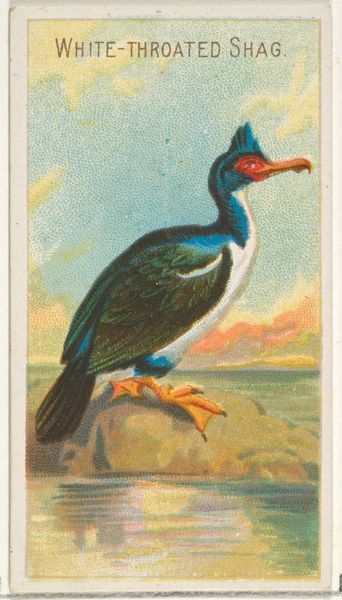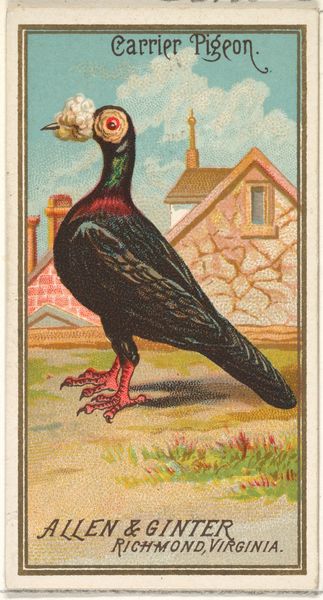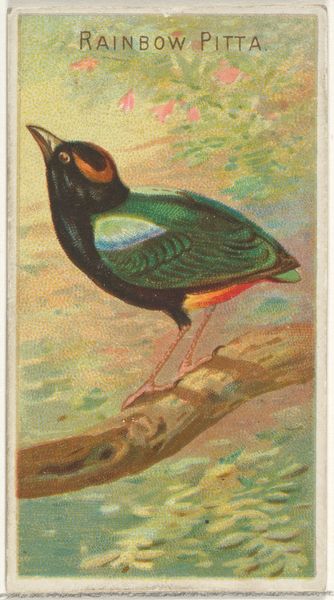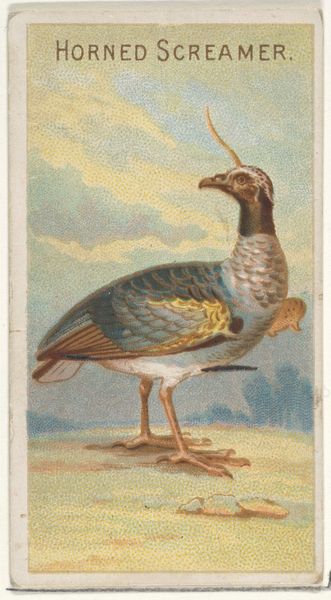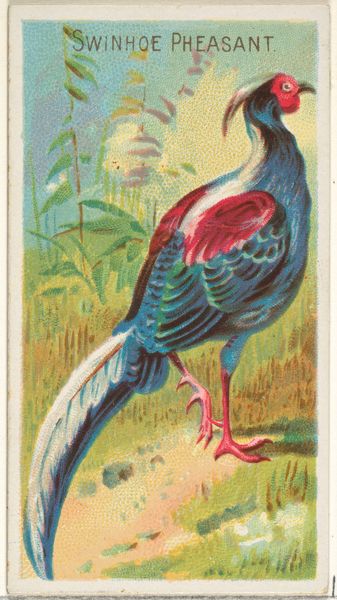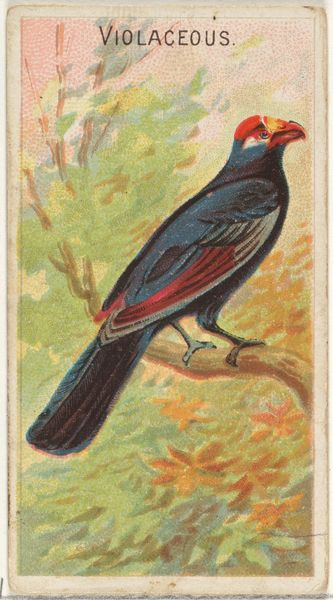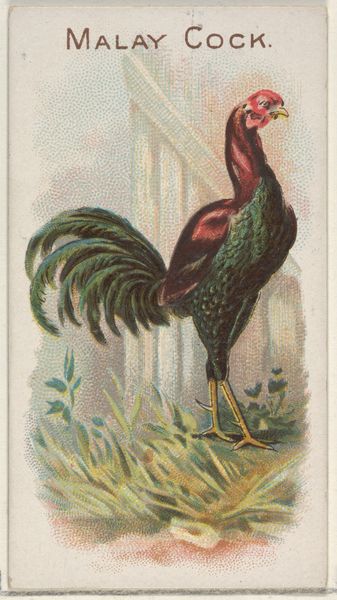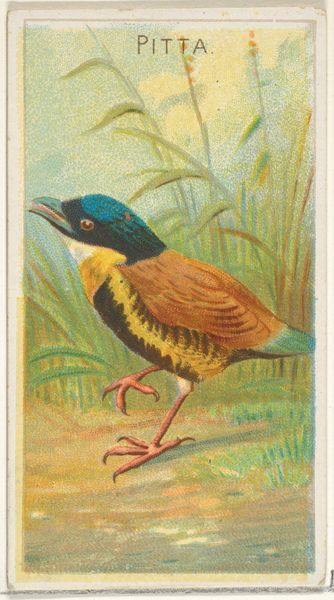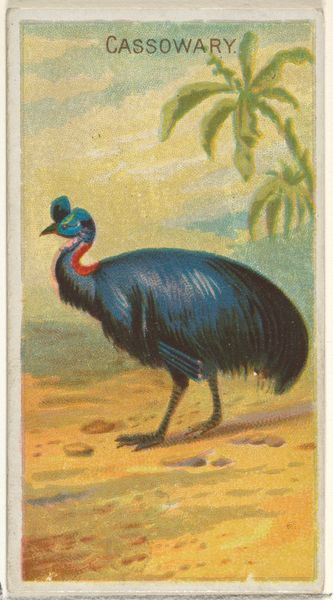
The Notornis, from the Birds of the Tropics series (N5) for Allen & Ginter Cigarettes Brands 1889
0:00
0:00
Dimensions: Sheet: 2 3/4 x 1 1/2 in. (7 x 3.8 cm)
Copyright: Public Domain
Curator: Immediately, the vividness catches my eye! What a striking rendering. Editor: Well, let's provide some context. What we're looking at is a chromolithograph entitled "The Notornis," created in 1889 by Allen & Ginter as part of their "Birds of the Tropics" series for cigarette cards. It's currently housed at the Metropolitan Museum of Art. Curator: Cigarette cards! That's unexpected. Tell me more about the production aspect. I'm fascinated by the process. Editor: Mass production for mass consumption is what defined the era. The vibrant color work would have added appeal for collecting, bartering. Allen & Ginter tapped into an emerging culture of mass consumption through striking visual imagery. Curator: So, even within such a small space, you get a depth that creates an interesting sense of scale. Do you read anything symbolic in this bird's presentation? Editor: Absolutely. The Notornis, known today as the Takahē, is flightless and native to New Zealand. This immediately resonates with themes of rarity, uniqueness, and perhaps even a subtle commentary on insular beauty. Curator: Its stance is curious. Neither quite defensive, nor fully confident, it has something inherently captivating in this in-between moment, doesn’t it? And there's the juxtaposition between its implied exoticness, and its commercial usage on something so commonplace. Editor: Exactly. It’s also the late 19th century, rife with exploration, colonization, and exoticism—the bird itself becomes a symbol of discovery and possession. Think about the scientific fascination coupled with colonial impulses. This bird as an emblem… Curator: A beautiful, poignant microcosm indeed. Viewing it now makes me appreciate its role beyond just a piece of promotional ephemera, considering how it connected the production line to something rare. Editor: And that makes it more relevant than ever as it mirrors consumerism then and now, and how it intertwines nature and profit. A true visual embodiment of its era.
Comments
No comments
Be the first to comment and join the conversation on the ultimate creative platform.


